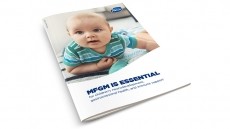Researchers discover biomarker that indicates preterm birth

Preterm birth, when a baby is born before 37 weeks of pregnancy, affects 1 of every 10 infants born in the United States, According to the Centers for Disease Control (CDC). Now, researchers at Washington State University say they found a biomarker in the cheek cells of mothers and fathers of preterm infants that could help prevent premature births.
The research, published in Scientific Reports, showed how a simple swab of the cheek could lead to preventative measures to reduce the incidence of preterm birth.
Study details
The scientists used buccal cells collected by a cheek swab, collected from two groups of mother-father-infant triads shortly after birth. In one set of 19 triads, the infants were born premature and in another group of 21 triads, the babies were carried to full term. The epigenetic analysis found the signature in the mothers, fathers and female preterm babies, however they didn’t find any in the male preterm infants. While the fathers had fewer biomarkers, they were still enough to indicate a likely preterm birth. Overall, the researchers documented over 100 epigenetic biomarkers.
“The study shows an epigenetic biomarker for preterm birth (PTB) can be developed and used to assess the susceptibility for a mother to have a PTB. Although expanded trials are needed to optimize the current data, it shows such an assay can be developed. This will allow clinical treatment for susceptible patients to be taken and reduce the impacts of PTB on the babies health,” explained senior author Michael Skinner, a distinguished professor in Washington State University’s School of Biological Sciences.
“One of the first”
While a number of potential biomarkers for preterm birth have been identified in the past, Skinner explained that previous studies on the genetic mutations or altered protein expression identified but are useful in less than 10% of preterm births and do not work well as a susceptibility biomarker, and are only associated with the preterm births when it actually occurs.
“So no effective susceptibility biomarker currently exists and the epigenetic test using non-invasive collected buccal cells is one of the first,” he noted.
Skinner also told NutraIngredients-USA that he was surprised that a buccal cell could be used, which is related to the fact epigenetic inheritance and early life exposure impacts on the epigenetics will be part of the disease etiology. He was also taken aback that the father also had a signature, which suggests a paternal impact on PTB that has not been established on a molecular level.
“The signature we found was present in all the parents we analyzed,” said senior author Michael Skinner, a professor in Washington State University’s School of Biological Sciences. “This is likely to lead eventually to a very useful test. We used buccal cells, which are collected by a cheek swab. It's very non-invasive and easy to do.”
More research, funding needed
The authors concluded that this research provides a “proof of concept” that DNA methylation analysis of buccal swabs of parents may be used to potentially predict preterm birth, adding that the accuracy and predictive ability of the biomarker needs to be improved with future clinical trials. Such a preterm birth risk or susceptibility biomarker would allow for better interventions to prevent preterm birth through timely administration of prenatal steroids, magnesium sulfate, and optimal delivery procedures.
Skinner told us that an expanded clinical trial with hundreds of patients is now needed to optimize and be used in the first trimester to allow this to be moved to clinical use. “We are set to do this but need funding, which is not easy to get.”
What this means for the future of personalized health
“There are a number of clinical management protocols to help delay and prevent PTB from occurring, but today without knowing which patients are susceptible, they cannot be used well. The PTB biomarker will allow early in pregnancy to make the assessment so these preventative medicine approaches can be used,” said Skinner.
He added that he suspects similar types of epigenetic biomarkers could be developed for many pathologies, which will allow personalized health and preventive medicine to be realized in the future.
Source: Scientific Reports
Mar 1 2022 doi.org/10.1038/s41598-022-07262-9
"Preterm birth buccal cell epigenetic biomarkers to facilitate preventative medicine"
Authors: M. Skinner, et al.














